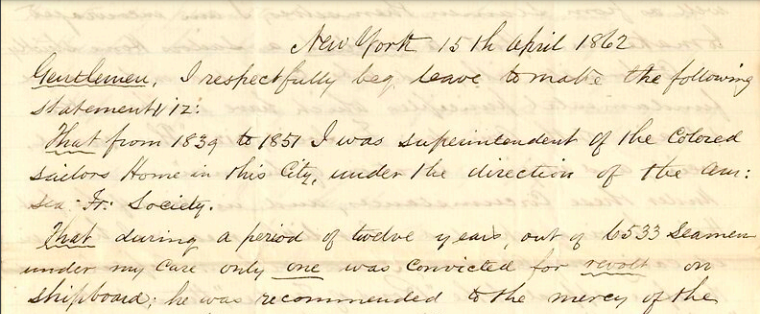
Mystic, Conn. (February 13, 2023) – Mystic Seaport Museum and Discovering Amistad will partner to host an invigorating moderated roundtable discussion in celebration of Black History Month. This interdisciplinary conversation will highlight Black Excellence at Sea and will include historical and contemporary Black maritime narratives.
The lecture will be held in the Masin Room of the Thompson Exhibition Building at Mystic Seaport Museum on Saturday, February 25, from 1:30 to 4:30 pm. The event will be moderated by Akeia de Barros Gomes, PhD, the Senior Curator of Maritime Social Histories at Mystic Seaport Museum, Director of the Frank C. Munson Institute of American Maritime Studies and Visiting Scholar at Brown University’s Center for the Study of Slavery and Justice.
Five Maritime Scholars will share a fascinating history and their remarkable work to reclaim and highlight Black excellence. Panelists include:
- Dr. Kevin Dawson: Associate Professor of History, Interdisciplinary Humanities Graduate Group, Chair, University of California, Merced; Author of Undercurrents of Power: Aquatic Culture in the African Diaspora
- Skip Finley: Journalist, Martha’s Vineyard Gazette; Author of Whaling Captains of Color: America’s First Meritocracy
- Dr. Frank Mitchell: Cultural Organizer in Visual Arts and Public Humanities; Curatorial Advisor; Author of The Catalog Afrocosmologies: American Reflections, The Anthology African American Connecticut Explored, and The Culinary Study African American Food Culture
- Dr. Amelia Moore: Associate Professor of Marine Affairs at the University of Rhode Island; Associate Producer of the documentary film, Decolonizing Science?
- Dr. Timothy Walker: Professor of History, Executive Board: Center for Portuguese Studies and Culture, University of Massachusetts Dartmouth; Editor of Sailing to Freedom: Maritime Dimensions of the Underground Railroad; Tagus Press Series Co-Editor: Classic Histories from the Portuguese-Speaking World in Translation
In-person space is limited, but guests are welcome to join the event virtually. To learn more and register in advance, visit here.
###
Media Contact
Sophia Matsas
Director of Marketing & Communications
Mystic Seaport Museum
860.572.5317 (o)
sophia.matsas@mysticseaport.org
About Mystic Seaport Museum
Mystic Seaport Museum is the nation’s leading maritime Museum. Founded in 1929 to gather and preserve the rapidly disappearing artifacts of America’s seafaring past, the Museum has grown to become a national center for research and education with the mission to “inspire an enduring connection to the American maritime experience.” The Museum’s grounds cover 19 acres on the Mystic River in Mystic, CT, and include a recreated New England coastal village, a working shipyard, formal exhibit halls, and state-of-the-art artifact storage facilities. The Museum is home to more than 500 historic watercraft, including four National Historic Landmark vessels, most notably the 1841 whaleship Charles W. Morgan. For more information, please visit mysticseaport.org and follow the Museum on Facebook, Twitter, YouTube, and Instagram.
About Discovering Amistad
Discovering Amistad is a nonprofit educational organization that provides full-year programming on its tall ship, The Amistad, in classrooms and at historic sites of partner organizations. It enables children and adults in Conn. and the region to discover the story of the Amistad and its impact on Conn. and the nation. Importantly, the organization provides learning opportunities for children and adults to discover the relevance off the Amistad to today’s world. For more information, please visit discoveringamistad.org and follow us on Facebook, Instagram, and TikTok.
###






